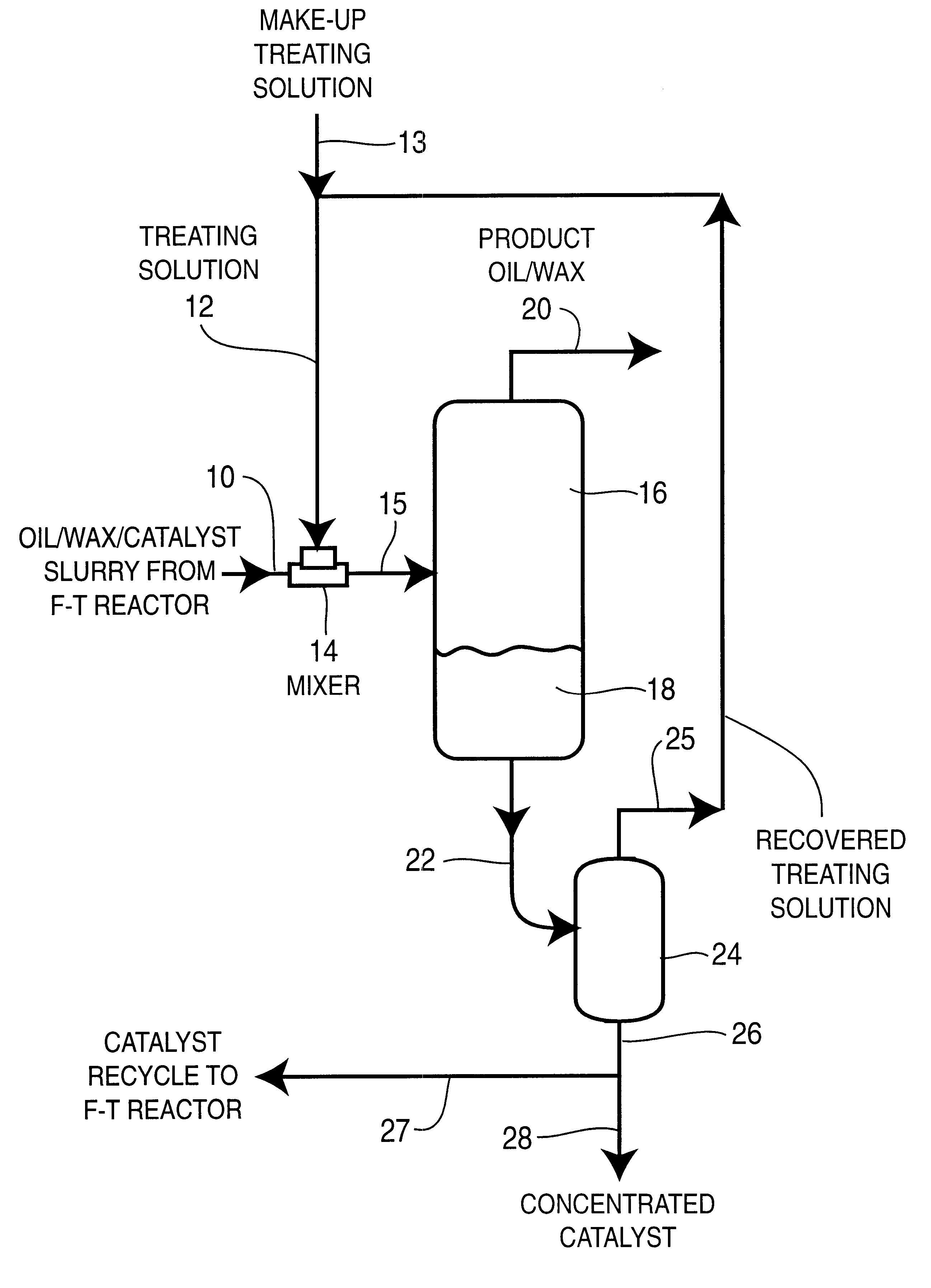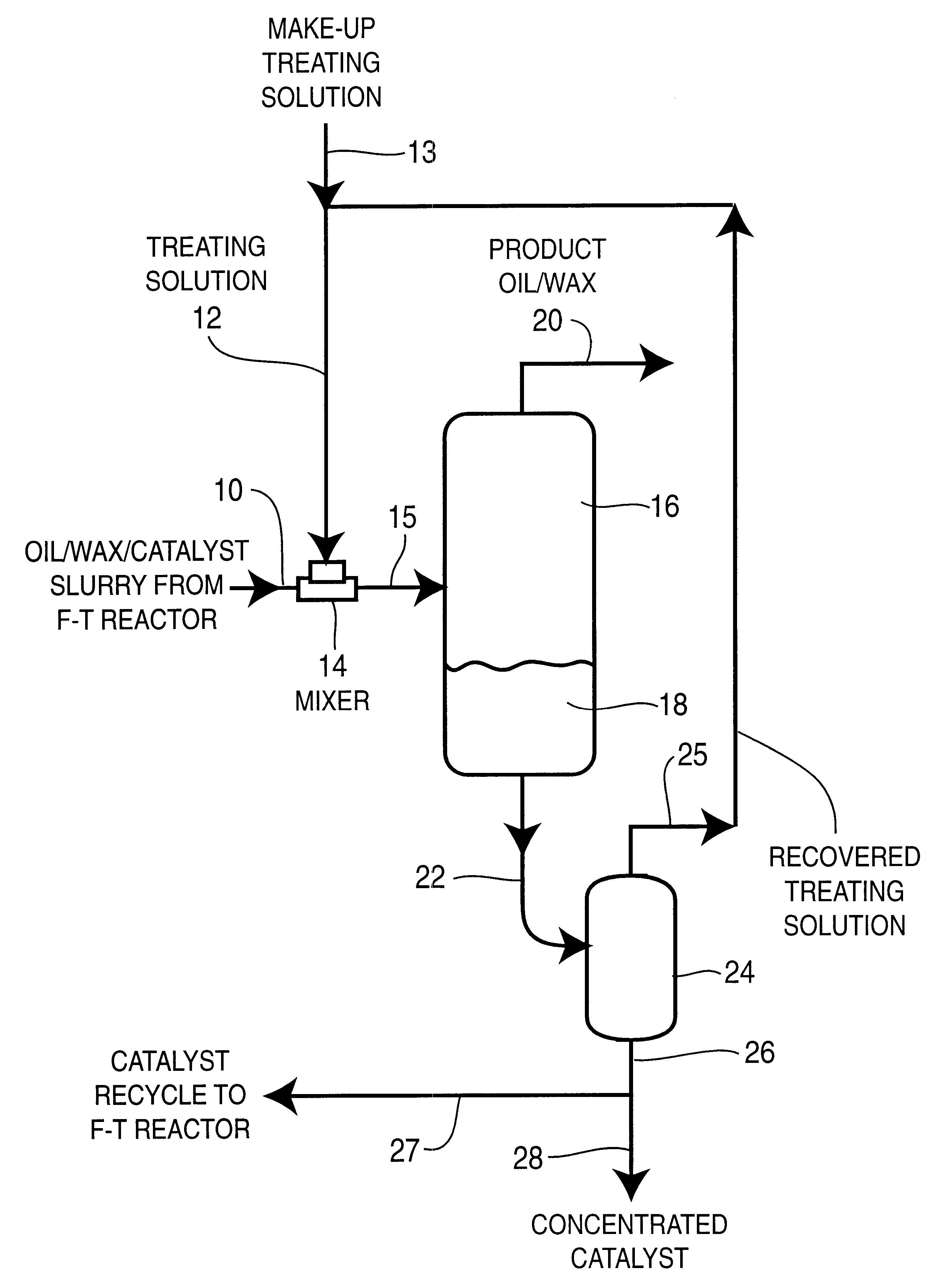Coalescence enhanced gravity separation of iron catalyst from Fischer-Tropsch catalyst/wax slurry
- Summary
- Abstract
- Description
- Claims
- Application Information
AI Technical Summary
Benefits of technology
Problems solved by technology
Method used
Image
Examples
example 1
2 ml of liquid paraffin containing 3 wt. % of iron-based F-T process catalyst fines with carbon deposition and having a particle size of <325 mesh, was stirred together with 4 ml of treating solution which contains 50% 2-propanol, 0.5% methyl cellulose, and 0.5% of EDTA at 20.degree. C. room temperature and atmospheric pressure. After such mixing, at least 90% catalyst / oil separation and catalyst settling was observed in less than 5 minutes time.
example 2
2 ml of liquid paraffin / catalyst slurry as in Example 1 was stirred with 4 ml of treating solution which contains 50% ethanol, 0.5% methyl cellulose and 0.5% EDTA at 20.degree. C. room temperature and atmospheric pressure. After the mixing, at least 90% catalyst / oil separation was observed in less than 5 minutes.
example 3
2 ml of liquid paraffin / catalyst slurry as in Example 1 was stirred with 4 ml of treating solution which contains 50% 2-propanol, 0.5% methyl cellulose and 0.5% methyl sulfoxide at 20.degree. C. room temperature and atmospheric pressure. After the mixing, at least 90% catalyst / oil separation was observed in less than 5 minutes.
PUM
| Property | Measurement | Unit |
|---|---|---|
| Temperature | aaaaa | aaaaa |
| Fraction | aaaaa | aaaaa |
| Pressure | aaaaa | aaaaa |
Abstract
Description
Claims
Application Information
 Login to View More
Login to View More - R&D
- Intellectual Property
- Life Sciences
- Materials
- Tech Scout
- Unparalleled Data Quality
- Higher Quality Content
- 60% Fewer Hallucinations
Browse by: Latest US Patents, China's latest patents, Technical Efficacy Thesaurus, Application Domain, Technology Topic, Popular Technical Reports.
© 2025 PatSnap. All rights reserved.Legal|Privacy policy|Modern Slavery Act Transparency Statement|Sitemap|About US| Contact US: help@patsnap.com


